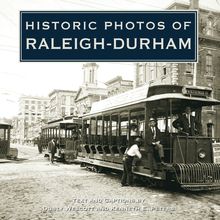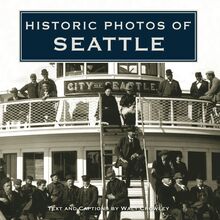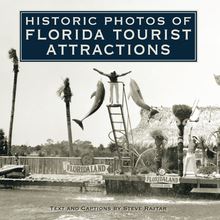Historic Photos of West Virginia , livre ebook
128
pages
English
Ebooks
2010
Vous pourrez modifier la taille du texte de cet ouvrage
Obtenez un accès à la bibliothèque pour le consulter en ligne En savoir plus
Découvre YouScribe en t'inscrivant gratuitement
Découvre YouScribe en t'inscrivant gratuitement
128
pages
English
Ebooks
2010
Vous pourrez modifier la taille du texte de cet ouvrage
Obtenez un accès à la bibliothèque pour le consulter en ligne En savoir plus
Publié par
Date de parution
01 avril 2010
Nombre de lectures
3
EAN13
9781618584519
Langue
English
Poids de l'ouvrage
13 Mo
West Virginia is a state of overwhelming beauty. Shared traditions, shared tragedies, and shared histories bind its people to the land and each other with a strong sense of place, family, and home.
In striking black-and-white photos culled from state and national archives, accompanied by text from an award-winning writer, Historic Photos of West Virginia captures the history of this remarkable state. Even readers unfamiliar with its history will find a compelling drama in its tumultuous birth in the Civil War, its growth as a center for extraction industries and manufacturing, its role as a new homeland for immigrants, and its history as the birthplace of Mother’s Day and of heroes like Charles “Chuck” Yeager. The triumphs of natives like Nobel Prize–winning author Pearl S. Buck and tragedies like the Monongah mine disaster—all are depicted here as part of the complex, compelling story of the Mountain State and its people.
Publié par
Date de parution
01 avril 2010
Nombre de lectures
3
EAN13
9781618584519
Langue
English
Poids de l'ouvrage
13 Mo
HISTORIC PHOTOS OF
WEST VIRGINIA
T EXT AND C APTIONS BY G ERALD D. S WICK
Peace returned to Harpers Ferry at the end of the Civil War, but animosities remained. Residents of Jefferson and Berkeley counties were predominantly Confederate, but when a referendum on joining West Virginia was taken May 28, 1863, only citizens who had taken an oath of loyalty to the Union were permitted to vote. West Virginia got the two counties-and the critically important B O Railroad. Virginia sued unsuccessfully after the war to get them back.
HISTORIC PHOTOS OF
WEST VIRGINIA
Turner Publishing Company 200
4th Avenue North Suite 950
Nashville, Tennessee 37219
(615) 255-2665
www.turnerpublishing.com
Historic Photos of West Virginia
Copyright 2010 Turner Publishing Company
All rights reserved.
This book or any part thereof may not be reproduced or transmitted
in any form or by any means, electronic or mechanical, including photocopying, recording, or by any information storage and retrieval system, without permission in writing from the publisher.
Library of Congress Control Number: 2009939387
ISBN: 978-1-59652-565-8
Printed in China
10 11 12 13 14 15 16 17-0 9 8 7 6 5 4 3 2 1
C ONTENTS
A CKNOWLEDGMENTS
P REFACE
T HE W AR C HILD G ROWS U P (1859-1899)
B OTTLES , C IGARS, AND T OILET B OWLS (1900-1919)
Y ELLOW D OG , R ED B LOOD , B LACK F RIDAY (1920-1939)
E XODUS AND G ENESIS (1940-1979)
N OTES ON THE P HOTOGRAPHS
Demand for coal oil produced from cannel coal soared in the 1850s, creating the first coal boom in the region. Cannelton, the Fayette County town shown here, was a leading producer. Cannel derives from Old English for candle coal. After the Civil War, petroleum-based kerosene became the main source of illumination, but Cannelton continued cannel coal production into the twentieth century.
A CKNOWLEDGMENTS
This volume, Historic Photos of West Virginia , is the result of the cooperation and efforts of many individuals and organizations. It is with great thanks that we acknowledge the valuable contributions of the following for their generous support:
Vickie Bowden, Belgian-American Heritage Society of West Virginia
David Houchin, Clarksburg-Harrison Public Library
John Piscitelli, Fairmont State University Photo Archives
Library of Congress
Lisle Brown, Marshall University Special Collections
Dr. Keith D. Alexander, Robert C. Byrd Center for Legislative Studies, Shepherd University
West Virginia Humanities Council and the staff and writers of The West Virginia Encyclopedia , edited by Ken Sullivan
Debra A. Basham, West Virginia State Archives
Lori Hostuttler, West Virginia and Regional Collection, West Virginia University
Ancella R. Bickley
Sheri, John, and Imogene England
Phyllis and Jim Moore
This book is dedicated to the memory of my parents, Harold and Iona Phillips Swick, and to my brothers and sister, Howard, Clinton, Theron, and Linda, and the memory of their mother, Reinus Wadding Swick .
With the exception of touching up imperfections that have accrued over time and cropping where necessary, no changes have been made to the photographs. The focus and clarity of many photographs is limited to the technology and the ability of the photographer at the time they were taken.
P REFACE
There is no such thing as a former West Virginian. Residents may leave the Mountain State, as many have had to do, beginning with the Great Exodus during the Great Coal Depression. But they cling to memories of its magnificent views and friendly people with a tenacity few other states can claim. Even people from elsewhere recognize this. Singer-songwriter Bruce Utah Phillips eulogized it in Green Rolling Hills (of West Virginia). John Denver sang of the state as almost heaven in Take Me Home, Country Roads.
West Virginians know their state isn t heaven, but they figure it s just down the road from there. Its 55 counties comprise over 24,000 square miles of spectacular, rugged beauty.
The hills have largely defined West Virginia and its people. Coal, oil, gas, and timber extracted from those mountains have been the primary reason for the state s perennial boom-and-bust economy. Creating effective transportation systems in such topography has always been a major consideration. Until the arrival of Interstate highways in the 1970s, many areas were isolated, and some are still well off the beaten path.
In some respects, that has worked to West Virginia s benefit. In towns where rush hour lasts less than 15 minutes, stress is significantly less than in a bustling metropolis. The state has produced many internationally recognized writers, musicians, and other artists; perhaps its calmer pace of life is conducive to artists developing their craft. The state s traditionally isolated communities and history of self-contained coal towns reinforced a strong sense of place that is still present even in the age of Interstates and the Internet.
Besides artists, the state has produced or nurtured noted inventors, ambassadors, and industrialists, along with major players in national politics. Visitors of the 1800s and early 1900s wrote of the great future they saw for West Virginia, and at times that starry future has proven to be a reality. At various times, the state has been a leading producer of coal, steel, lumber, glass, cigars, and even bathroom fixtures.
Tragedy has been a frequent visitor, though. Mining and weather disasters have claimed many lives. Great fires have swept through cities and towns. The extraction industries that created thousands of jobs left scarred hillsides, orange streams, and denuded forests. A 1970 plane crash killed all members of the Marshall University football team and coaching staff.
These tragedies were shared tragedies, felt by everyone in the affected communities and, indeed, by people all across the state, strengthening the bond West Virginians feel with each other.
Then, too, there are all those hillbilly jokes West Virginians have to endure. The Hatfield-McCoy Feud of the 1800s and photographs of deep poverty in the 1930s and the 1950s to 1960s all played a role in creating a hillbilly stereotype. Another annoyance comes from the geographically challenged who don t realize Virginia and West Virginia are separate states. Some World War II pilots even painted West by Gawd Virginia on their fighters noses to make the point. Dealing with these annoyances has also, in its own way, added to West Virginians camaraderie.
All of this, along with strong family bonds and shared traditions and beliefs, is why so many residents choose to remain through economic ups and downs, and why so many who have had to leave keep the mountains ever in their hearts.
The photos in this book are like the patchwork quilts for which the state is renowned. They capture fragments of history, of great events and daily life that taken together tell the evolving story of a place and its people. It is hoped they will give insight into why West Virginia, like a mother waiting patiently, whispers to its scattered children, Come home when you can.
- Gerald D. Swick
The state s rivers offered a better means of transportation than its roads did, but the amount of goods and passengers was often limited because many rivers could only be traversed by shallow-draft craft like this bateau, the Tam O Shanter , photographed on the New River.
T HE W AR C HILD G ROWS U P (1859-1899)
John Brown s attempt to seize the U.S. Arsenal at Harpers Ferry to arm a slave rebellion in October 1859, followed by the election of Abraham Lincoln to the presidency the next year, turned embers of discontent between North and South into open flames of civil war. Virginia passed an ordinance of secession from the Union on April 17, 1861, but on May 13, representatives of western counties met in Wheeling and made the risky decision to keep those counties in the Union.
Article IV, Section 3 of the U.S. Constitution requires the mother state s permission to form a new state. Would admitting Kanawha, as the state was to be called, into the Union be constitutionally acceptable? Those voicing concerns included Abraham Lincoln and Francis H. Pierpont, governor of the Restored Government of Virginia that oversaw the region between 1861 and 1863. The fate of citizens attempting to form a separate, Union-loyal state was as tenuous as that of colonists who had rebelled against Britain in 1776.
Practical considerations prevailed. On June 20, 1863, a thirty-fifth star was added to the U.S. flag. To support the contention that this was a part of Virginia that had never left the Union, the new state was named West Virginia. It was required to amend its constitution in a manner that would prohibit slavery. Even a few counties that had not sought to leave Virginia were grafted onto the new state due to their strategic significance.
The first land battle of the Civil War was fought at Philippi. Some towns in the Eastern Panhandle changed hands over 50 times. The 1863 Jones-Imboden Raid included history s first military action against an oil field.
The new state faced many difficulties, including creating a public education system. Even before war s end, normal schools were established to prepare an adequate numbers of teachers. These schools formed the nucleus for the state colleges and universities. The state agricultural college became West Virginia University.
Immigrants were recruited from Europe, first to increase population and investment, then to work in the mines and fledgling factories. Logging, railroading, coal, gas, and oil fed local economies. Tourism grew, despite transportation difficulties in the steep terrain. Out-of-state visitors predicted a bright future for the region. The war child was growing up.
On the night of October 16, 1859, John Brown and his followers seized the U.S. Arsenal at Harpers Ferry to arm a slave rebellion. From the engine house shown here, they traded shots with local militia until














